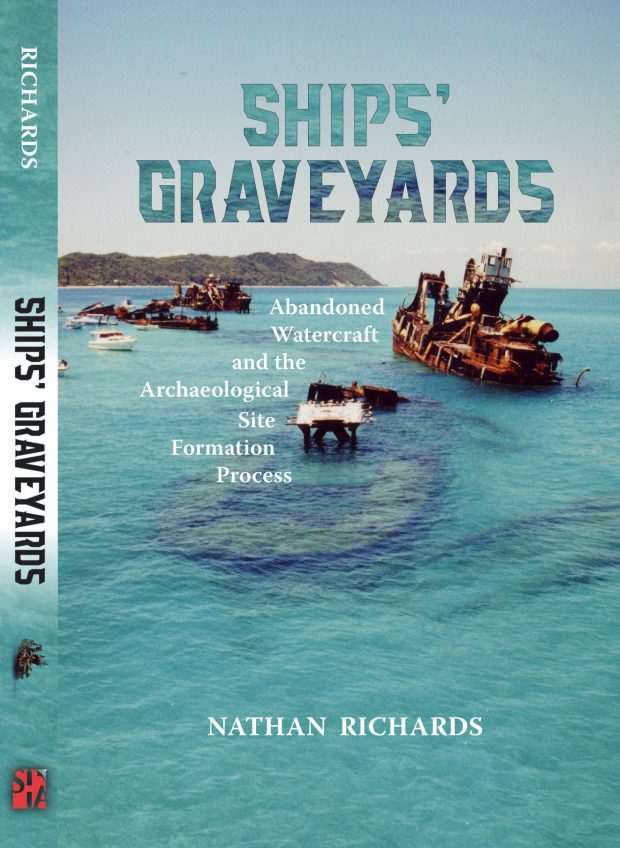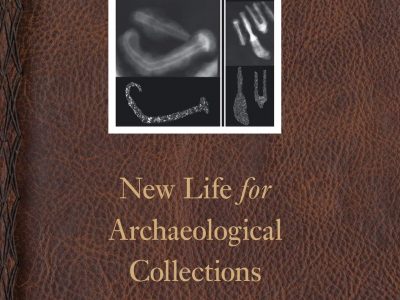Space Still Available for GMAC Anti-Racism Training Workshops at SHA 2017 Conference
[pt id='14076' size='medium'] Dear SHA Members, As you may know, the Gender and Minority Affairs…

April 5, 2022
Submitted by Mary L. Maniery
PAR Environmental Services, Inc., President
SHA Co-Publications Associate Editor
In March 2018, the SHA began a blog for the Society webpage to highlight our publications and our collaboration with various presses. While our co-publication program and partnerships with Springer, University of Nebraska Press, University of Florida Press, and University of Alabama Press expands our membership’s publication opportunities, the SHA has also continued to publish works independently through Amazon as Special Publications. SHA members can order “Ships Graveyards: Abandoned Watercraft and the Archaeological Site Formation Process” for $22.00 (paperback) or $11.00 (e-book).
Paperback: https://www.amazon.com/Ships-Graveyards-Abandoned-Watercraft-Archaeological/dp/1957402008/ref=tmm_pap_swatch_0?_encoding=UTF8&qid=&sr=
e–book: https://www.amazon.com/Ships-Graveyards-Abandoned-Watercraft-Archaeological-ebook/dp/B09SWN498M/ref=sr_1_1?crid=38WD7BG5XZG92&keywords=ships+graveyard+richards+ebook&qid=1650311082&s=books&sprefix=ships+graveyards+richards+ebook%2Cstripbooks%2C45&sr=1-1
If you are interested in contributing to a joint SHA published volume, please contact SHA’s Co-Publications Editor, Benjamin Ford (ben.ford@iup.edu)
Ships’ Graveyards: Abandoned Watercraft and the Archaeological Site Formation Process
Nathan Richards
Number of pages: 304; 15 tables; 50 figures
Society for Historical Archaeology Special Publication
Ships graveyards was originally published in 2008 as an SHA/University of Florida Press Co-Publication. The 2022 publication is a Second Edition, published solely by the SHA.
Ships’ Graveyards is an explicitly theoretical study that avoids the single-site bias prevalent in most underwater archaeology research. It also eschews the traditional examination of shipwreck sites as the core component of study in this field.
Instead, Nathan Richards seeks to discover what we can learn by examining intentionally abandoned vessels and to determine what the differences are between cultural site formation processes and those created “naturally” (that is, by shipwrecks and other nautical disasters).
Using Australian waters as a case study, Richards examines over 1,500 vessels abandoned over a period of more than 200 years. In offering such a detailed focus on an underutilized archaeological resource, he provides a model for the examination of similar sites and processes in many other locations around the world.
MM: What are some of your motivations for writing/spearheading this book?
NR: This is the 2nd edition of the work. The book was derived from my PhD dissertation (Flinders University, PhD in Archaeology, 2002). I was lucky enough to have my adviser (Dr. Mark Staniforth) submit it to SHA for consideration as a part of the dissertation prize (now called the Kathleen Kirk Gilmore Dissertation Award), and I was honored to win the award in 2003 (presented in 2004). The award came with a contract with University Press of Florida, which co-published the 1st edition with SHA in 2008. Through my work at Flinders University I became very interested in the application of processual comparative approaches to maritime archaeological subjects (also thanks to Professor Donald Pate, here) as I was exposed to ship abandonment areas scattered around the coastlines of Australia. This is an ongoing interest of mine, and I’ve been lucky to work on similar sites across the USA, and in Bermuda and Costa Rica.
MM: Who would you like to read this book? Who is your audience?
NR: In 2008, I was hoping the book would provide a theoretically-explicit perspective for looking at maritime archaeological data, and to help continue the development of the study of ship graveyards and to glean insights from watercraft discard behaviors. In 2013, I was fortunate to co-edit a book with Sami Seeb that highlighted some of the perspectives of scholars in this area (as The Archaeology of Watercraft Abandonment, Springer Press). In 2022, I still feel I have the same motivations, but I think I’ve become more interested in communicating how behavioral archaeological approaches continue to have relevance and application to maritime archaeological subjects. Realizing ship abandonment is very much a niche subject, I’d hope the audience would include a broad cross-section of maritime researchers, from students and avocational audiences to heritage managers and academics.
MM: Now that you have published this book, what kinds of things are you dreaming up next? What is in the works?
NR: As an adherent to Michael B. Schiffer’s work, I am interested in research themes that run the length and breadth of the subjects he wrote about over many decades regarding archaeological site formation and technological innovation and change – but adapted to the maritime domain. I have partial manuscripts concerned with the use-lives of individual vessels and fleets (wrecked and abandoned watercraft) to themes of technological adaptation and human agency. The sites range from fleets of abandoned barges run aground in the Caribbean, ferrous-hulled shipwrecks lost in locations like Hawai’i, and amphibious landing craft in the sounds of North Carolina. I just need to find the time to finish one!
Thanks to SHA for the opportunity to publish a 2nd edition of the work.
